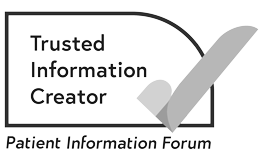Secondary lung cancer
Choose a type
What is secondary lung cancer?
Secondary lung cancer is when cancer cells spread to 1 or both lungs from a cancer that started somewhere else in the body. A primary cancer is where the cancer first starts. We have separate information about cancer that starts in the lung (primary lung cancer).
How does cancer spread to the lung?
Sometimes cancer cells break away from the part of the body where the cancer started (primary cancer). The cells can travel in the blood or the lymphatic system to another part of the body, such as the lungs. This is called secondary cancer or metastatic cancer.
Which cancers can spread to the lung?
Some cancers are more likely to spread to the lungs than others. These include:
- bowel (colon and rectal) cancer
- breast cancer
- lung cancer that spreads to the other lung
- bladder cancer
- testicular cancer
- stomach cancer
- gullet (oesophageal) cancer
- kidney (renal) cancer
- melanoma (a type of skin cancer)
- sarcomas (bone and soft tissue sarcomas)
- head and neck cancer.
Related pages
Symptoms of secondary lung cancer
Symptoms of secondary lung cancer can include:
- a cough that does not get better
- feeling breathless
- coughing up blood – this is called haemoptysis
- pain or discomfort in the chest that does not go away.
Some people may have general symptoms such as:
- tiredness
- weight loss
- loss of appetite.
Some people with secondary lung cancer may not have any lung cancer symptoms. It might be diagnosed after a routine scan or during a chest x-ray for another condition.
All these symptoms can be caused by conditions other than cancer – for example, a chest infection. Always see your doctor if you have any of these symptoms. If you do not feel better after a treatment such as antibiotics, your doctor can do more tests.
Related pages
Causes of secondary lung cancer
Related pages
Diagnosis of secondary lung cancer
If you have symptoms, you will usually begin by seeing your GP, who will examine you. If they think that your symptoms could be caused by cancer, they will refer you to a specialist doctor.
Tests may include:
-
Chest x-ray
A chest x-ray may be the first test you have. It is to check your lungs for anything that looks abnormal.
-
CT scan
A CT scan takes a series of x-rays that build up a 3D picture of the inside of the body.
-
PET scan
A PET scan uses low-dose radiation to measure the activity of cells in different parts of the body.
-
Biopsy
You may need to have a biopsy. This is when doctors take a sample of cells or tissue from the lung. They check the sample for cancer cells.
Secondary lung cancer can make fluid collect in the space between the two membranes (pleura) that surround the lungs. This is called a pleural effusion. If this happens, it may be possible for doctors to remove some of the fluid and check it for cancer cells.
Some people are diagnosed with a secondary cancer before the primary cancer has been diagnosed. If this happens, you will have tests to find where the cancer started.
Occasionally, doctors may not be able to find the primary cancer. This is called cancer of unknown primary (CUP).
Waiting for test results can be a difficult time. We have more information that can help.
Related pages
Treatment for secondary lung cancer
A team of specialists will meet to discuss the best possible treatment for you. This is called a multidisciplinary team (MDT).
Your doctor or cancer specialist or nurse will explain the different treatments and their side effects. They will also talk to you about things to consider when making treatment decisions. You will need this information before you give your permission (consent) to have any treatment.
The treatment you have for secondary lung cancer depends on:
- the primary cancer
- your general health
- your preferences.
Treatment is usually with the drugs or treatments used for the primary cancer. For example, if cancer cells have spread to the lung from a breast cancer you have breast cancer treatments not lung cancer treatments.
Usually the aim of treatment is to control the cancer and treat the symptoms. With certain cancers, the aim may be to cure the cancer.
Your cancer doctor and specialist nurse will talk to you about treatment options. You can ask them any questions you have. You and your doctor can decide together on the best treatment plan for you.
-
Chemotherapy
Chemotherapy is the use of anti-cancer (cytotoxic) drugs to destroy cancer cells. You usually have it to shrink and control secondary cancers in the lung and to reduce symptoms. The chemotherapy drug you have depends on where doctors think the cancer started (the primary cancer), whether you have had chemotherapy before, and how long ago.
-
Hormonal therapy
If you have a cancer that relies on hormones to grow you may have hormonal therapy. The type of hormonal therapy you have depends on whether you have already had hormonal treatments. There are several different types of hormonal therapy. You usually have it as tablets or injections.
-
Targeted therapy
Targeted therapy drugs find and attack cancer cells. They target something in or around the cancer cell that is helping it grow and survive. You may have a targeted therapy drug as an injection into a vein (intravenously) or as tablets.
-
Immunotherapy drugs
Immunotherapy drugs help stimulate your immune system to recognise and destroy cancer cells. Depending on the type of tumour you have, you might have an immunotherapy drug.
-
Radiotherapy
Radiotherapy treats cancer by using high-energy x-rays. You might have a short course of radiotherapy to relieve symptoms of secondary lung cancer, such as breathlessness or coughing up blood. A type of radiotherapy called SABR can be used in some situations – for example, when there is only one or a few secondary cancers in the lung.
-
Surgery
Occasionally, surgery to remove the secondary lung cancer may be possible. It is usually only done if the secondary cancer is small or is in one area of the lung and the cancer has not spread anywhere else in the body.
-
Tumour ablation
Tumour ablation uses heat or cold to destroy cancer cells. Doctors sometimes use it instead of surgery or radiotherapy for secondary lung cancer. Radiofrequency ablation (RFA) or microwave ablation uses heat to destroy cancer cells. It may be done under a general anaesthetic or using a local anaesthetic. Cryoablation is when extreme cold is used to destroy cancer cells.
You may be offered some treatments as part of a clinical trial. If you are interested in taking part in a clinical trial ask your doctor or nurse if there is a suitable trial available.
Related pages
Managing the symptoms of secondary lung cancer
You may have other treatments to manage any symptoms caused by secondary lung cancer.
Breathlessness
Breathlessness can be difficult to cope with, but there are treatments and drugs that can be used to help.
A blocked airway
Sometimes a secondary cancer in the lung can block one of the airways. This can make breathing difficult. The following treatments can help.
-
Laser treatment
Laser treatment uses heat to destroy cancer cells. This can help relieve the symptoms. You usually have laser treatment under a general anaesthetic.
-
Stents
If the secondary cancer is causing pressure on the windpipe or a large airway, a specialist doctor can insert a small tube called a stent to hold the airway open. You usually have this done under a general anaesthetic.
You can breathe more easily with the stent in place. It does not generally cause any problems.
-
External radiotherapy
Your doctor might advise having 1 or a few treatments of external radiotherapy to try and improve symptoms caused by pressure on the airways.
Fluid on the lung (pleural effusion)
A secondary lung cancer can cause a build-up of fluid between the two membranes (pleura) that cover the lungs. This is called a pleural effusion. The fluid puts pressure on the lung so that it does not expand normally. It may cause:
- breathlessness
- a cough
- a dull, aching pain.
These symptoms can be relieved by carefully draining the fluid through a tube. We have more information about managing a pleural effusion.
A cough
There are different treatments that can be tried to help a cough. Some types of painkiller tablets, such as codeine or morphine, can help suppress a cough. You can also have other drugs as a vapour you breathe in through an inhaler or a device called a nebuliser. A nebuliser turns a liquid containing the drugs into a fine mist you breathe into your lung. It is delivered with a face mask connected by a tube to the nebuliser. A saline mixture through a nebuliser may help loosen phlegm (sputum).
Sometimes a short course of radiotherapy may help improve a cough.
Pain
It is important to tell your doctor or nurse if you have any pain. There are different drugs that can be used to control pain. You can take painkillers in different ways. Tell your doctor or nurse if your painkillers are not controlling the pain. They can increase the dose or give you a different drug. Or you may be given radiotherapy to help with the pain. This is called palliative radiotherapy.
Coughing up blood
You may notice some streaks of blood in your phlegm (sputum). This is not usually a problem. But if you notice larger amounts of blood, tell your doctor. You can have treatment to help control it – for example, radiotherapy. A drug called tranexamic acid can sometimes be helpful.
We have more information about coping with advanced cancer that you may find helpful.
After secondary lung cancer treatment
You will have regular check-ups during and after your treatment. Tell your doctor or specialist nurse as soon as possible if you have any problems or notice new symptoms between appointments.
We have more information about follow-up care after treatment.
Support
It is common to have many different reactions and feelings when you find out that cancer has come back or spread. You may feel shocked and find it hard to understand. You may feel angry or frightened about the future. There are different people who can help to support you.
We have more information about coping with advanced cancer.
Macmillan is here to support you. If you would like to talk, you can:
- Call the Macmillan Support Line on 0808 808 00 00.
- Chat to our specialists online.
- Visit our secondary lung cancer forum to talk to people who have been affected by secondary lung cancer, share your experience, and ask an expert your questions.
Well-being and recovery
It can take time to recover after cancer treatment. Some days you may feel better than others. Looking after yourself by eating well and taking some gentle exercise can help.
It is important to know where to get support or information if you need it. People often need support even some time after secondary lung cancer treatment. But sometimes it is difficult to know who to ask for help. To find support:
- ask your GP or someone from your cancer team for advice about support in your area
- search cancercaremap.org to find cancer support services near you
- call us free on 0808 808 0000 or talk to us online - our cancer information and support specialists can offer guidance and help you find what you need.
About our information
This information has been written, revised and edited by Macmillan Cancer Support’s Cancer Information Development team. It has been reviewed by expert medical and health professionals and people living with cancer.
-
References
Below is a sample of the sources used in our lung cancer information. If you would like more information about the sources we use, please contact us at informationproductionteam@macmillan.org.uk
National Institute for Health and Care Excellence (NICE). Lung cancer – Diagnosis and management. Clinical guideline 2019. Last updated 2023. (accessed Nov 2023) Available at: https://www.nice.org.uk/guidance/ng122
European Society for Medical Oncology (ESMO). Small-cell lung cancer: ESMO clinical practice guidelines for diagnosis, treatment and follow-up. 2021. (accessed Nov 2023). Available at: https://www.esmo.org/guidelines/guidelines-by-topic/esmo-clinical-practice-guidelines-lung-and-chest-tumours/small-cell-lung-cancer
European Society for Medical Oncology (ESMO). Early and locally advanced non-small-cell lung cancer (NSCLC): ESMO clinical practice guidelines for diagnosis, treatment and follow-up. 2017. eUpdate 01 September 2021: New Locally Advanced NSCLC Treatment Recommendations (accessed Nov 2023) Available at: https://www.esmo.org/guidelines/esmo-clinical-practice-guideline-early-stage-and-locally-advanced-non-small-cell-lung-cancer
European Society for Medical Oncology (ESMO). ESMO expert consensus statements on the management of EGFR mutant non-small-cell lung cancer. 2022 (accessed Nov 2023). Available at: https://pubmed.ncbi.nlm.nih.gov/35176458/
Date reviewed

Our cancer information meets the PIF TICK quality mark.
This means it is easy to use, up-to-date and based on the latest evidence. Learn more about how we produce our information.
The language we use
We want everyone affected by cancer to feel our information is written for them.
We want our information to be as clear as possible. To do this, we try to:
- use plain English
- explain medical words
- use short sentences
- use illustrations to explain text
- structure the information clearly
- make sure important points are clear.
We use gender-inclusive language and talk to our readers as ‘you’ so that everyone feels included. Where clinically necessary we use the terms ‘men’ and ‘women’ or ‘male’ and ‘female’. For example, we do so when talking about parts of the body or mentioning statistics or research about who is affected.
You can read more about how we produce our information here.





